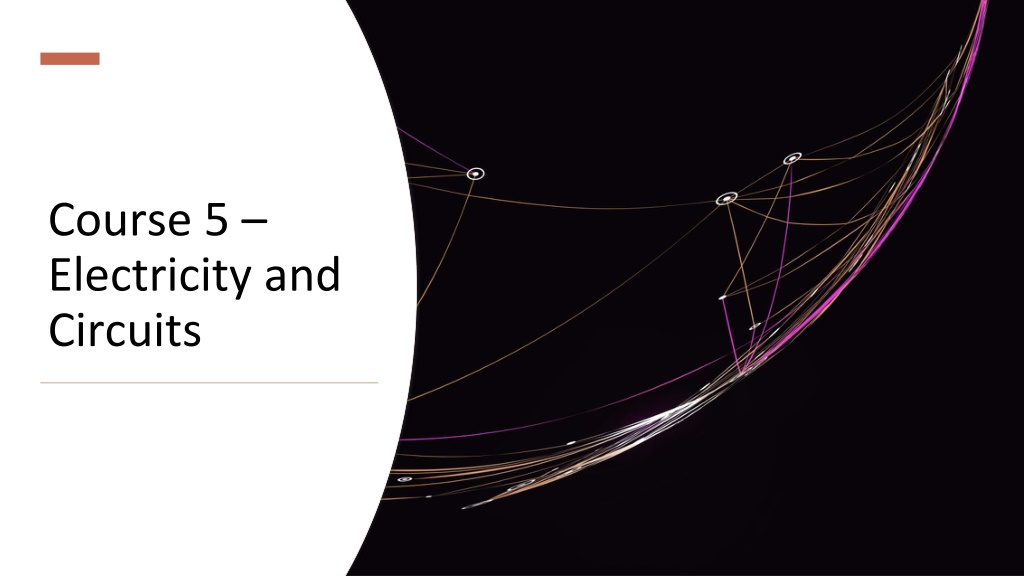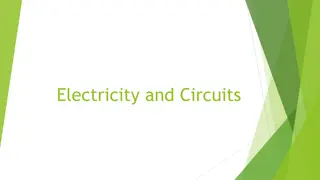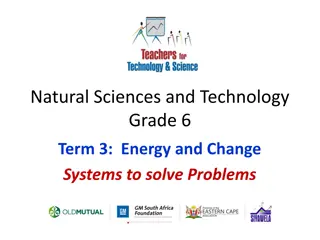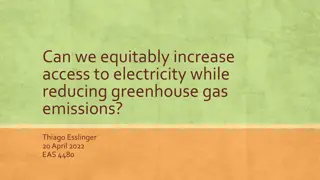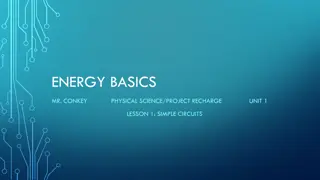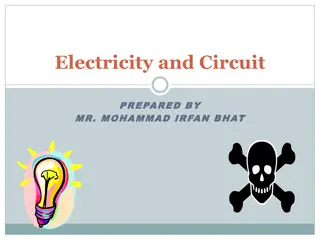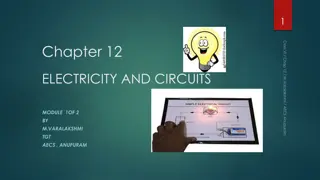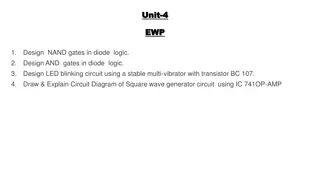Understanding Electricity and Circuits: A Comprehensive Overview
Explore the fundamentals of electricity, circuits, and energy in Course 5. Learn about electric charge, system power, losses, energy efficiency, and more. Discover the relevance of understanding electricity and promoting an engineering mindset. Delve into static electricity, properties of electric charge, examples of static charges, system power with losses, and the concept of energy. Understand the difference between power and energy and their measurement units, as well as examples of systems with losses. Enhance your knowledge of electricity with practical applications and theoretical concepts.
Download Presentation

Please find below an Image/Link to download the presentation.
The content on the website is provided AS IS for your information and personal use only. It may not be sold, licensed, or shared on other websites without obtaining consent from the author. Download presentation by click this link. If you encounter any issues during the download, it is possible that the publisher has removed the file from their server.
E N D
Presentation Transcript
Course 5 Electricity and Circuits
Objectives Electric Charge System Power System Losses Energy Efficiency
Relevancy To understand the basics of electricity To promote an engineering mindset
Parts of an Atom Protons Electrons Neutrons
Properties of Electric Charge Charge is quantized Magnitude of charge is independent of type Charge is conserved Charge is conserved in closed systems
Static Electricity Electric charge that has accumulated on an object. Static electricity is often created when two objects that are not good electrical conductors are rubbed together, and electrons from one of the objects rub off onto the other. This happens, for example, when combing one's hair or taking off a sweater. Sudden releases of built-up static electricity can take the form of an electric arc. (Dictionary.com, 2022)
Examples of Static Charges and Uses CRT television screen Lightning Clothes dryer Electrostatic paint sprayer Pollution management Water ionization
System Power and System Losses Also defined as work A force moving through a distance Generally, the limiting factor Measured in watt, a rate of energy conversion System loss is work that is not usefully converted
Examples of Systems with Losses Incandescent lightbulb Cordless drills Electric stove Electrical grid
Energy The ability or capacity to do work Measured in joules Electricity producers charge consumers based on kWh used 1 kWh = 3,600,000 joules
Power vs Energy Power is a snapshot in time Energy is total power consumed over time Energy is independent of power Work and energy have the same base units (joules) Work is energy used for a task
Power vs Energy Examples An electricity customer gets billed for 681 kWh used Is the customer paying for energy or power?
Power vs Energy Examples An electricity customer gets billed for 681 kWh used Is the customer paying for energy or power? The customer is paying for energy
Power vs Energy Examples A solar panel has a rated output of 330 watts Is this power or energy?
Power vs Energy Examples A solar panel has a rated output of 330 watts Is this power or energy? This is power Remember that this is a rate of output
Conversion Electrical energy is generally obtained from other sources Mechanical Chemical Light Energy conversion is rarely 100% efficient
Efficiency Examples A solar panel converts 1300 joules of light energy into 260 joules of electrical energy What is the efficiency of the panel?
